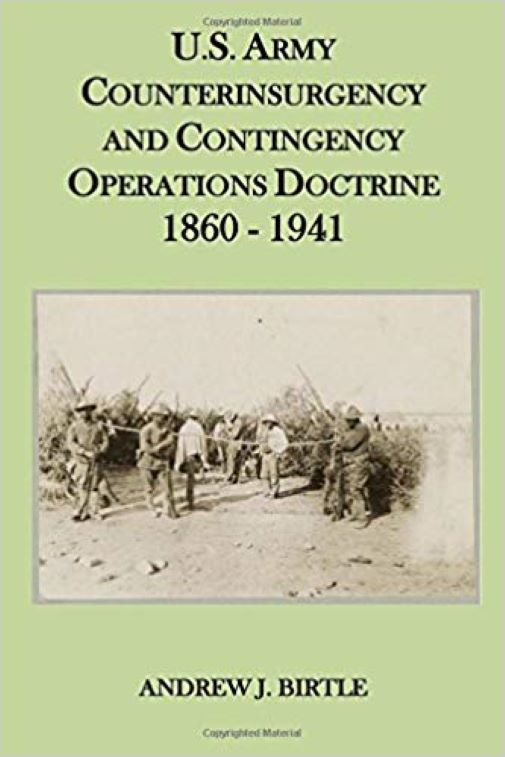It has long been accepted that the U.S. Army did not have an official, codified, written doctrine for the conduct of counterguerrilla, pacification, and nation-building activities prior to World War II. The absence of a formal, written doctrine, however, does not mean that American soldiers did not develop concepts and theories about such activities, some of which became enduring principles that guided Army operations for decades despite their meager mention in the manuals of the day. It is the contention of this book that there was a strong continuity in the manner in which the U.S. Army performed counterinsurgency and overseas constabulary missions in the century that preceded the outbreak of World War II and that some of the central principles governing the conduct of such operations were indeed incorporated into official Army doctrinal literature prior to America’s entry into that conflict. Intellectual history—the tracing of the evolution of thought and ideas over time—is a tricky business. Showing continuity and change in thought and action is difficult, but explaining how it came about is even tougher. Writers studying the evolution of military doctrine are usually aided in their endeavors by the existence of official manuals that codify the state of military thinking at a particular point in time. Unfortunately, such manuals are often silent on the less conventional aspects of the military art. Moreover, one must remember that a system of comprehensive doctrinal manuals in the modern sense did not exist in the nineteenth century and was still in its infancy during the early decades of the twentieth. Consequently, the student of military theory is forced to cast a wider net, studying not only manuals, but curricular materials, textbooks, war plans, and the less official publications of individual soldiers. Murkier still, but no less real, is the realm of personal experience, folkways, and institutional norms that can be acquired and passed down over time. Anthropologists maintain that oral tradition can be a powerful force governing the conduct of human cultures and institutions. The fact that such traditions are not written down denies neither their existence nor their significance. Students of military thought, therefore, must look at deeds as well as words, because by studying the actions of past soldiers, we may gain insight into the principles and beliefs underlying their behavior. I examined all such sources then, official and unofficial, words as well as deeds, to gain insights into the Army’s approach to counterinsurgency and contingency operations. This volume covers a lot of ground—nearly a century of time and occurrences that span the globe. Although many different events are mentioned, this book is not intended to be an operational history. Similarly, while the volume touches upon subjects as diverse as military government, military law, and tactics, it does not present a comprehensive review of each of these distinct doctrinal areas. Rather, it examines these and other subjects selectively to gain insight into what the pre–World War II Army came to call “small wars”—the interrelated fields of counterguerrilla warfare, pacification, and overseas constabulary and contingency operations. Though never credited with a manual of its own, during the century that preceded the outbreak of World War II a loose body of theory, doctrine, thought, and precedent gradually evolved within the U.S. Army into what one might call, to paraphrase Russell Weigley, an American way of small wars.
333 pages





